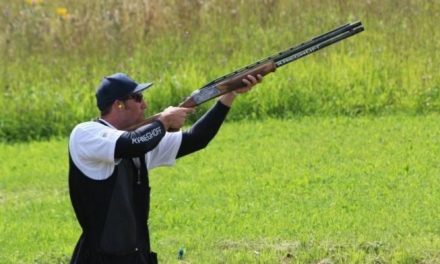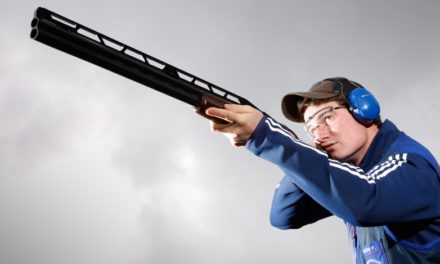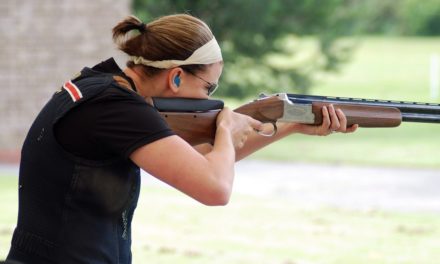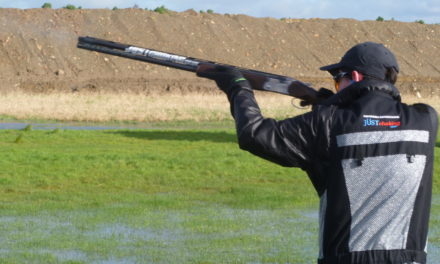Matt Hance recently triumphed over nearly 1100 shooters, and appalling conditions to win the 2012 Clay Shooting Classic by one shot from George Digweed – we managed to grab some time in Matts busy schedule before he flew out to Portugal to compete in the Portugese Grand Prix and the European FITASC Championships where he finished 5th overall.
ShootClay : Firstly, many congratulations on winning the 2012 Clay Shooting Classic – we were watching the final shooters and results coming in at Churchills, but also watching you looking relaxed and enjoying the competition. How did it feel when you finally realised you’d held on to top spot and claimed a lovely prize?
Matt Hance : To be honest I couldn’t believe it, I truly thought that my score would get topped, especially on the Saturday as the weather was far better than Thursday or Friday. Several people started to congratulate me as the afternoon drew on, but even at that stage I still didn’t think it would hold as I knew I had left 3 or 4 very killable targets out there. When it was confirmed, it was just a fantastic feeling, shooting on the first day really did make the rest of the week drag on, but the wait was certainly worth it! Standing on the podium in top position receiving a stunning Trophy and of course a beautiful Perazzi MX12 knowing that you have beaten the best of the best…truly is the best feeling in the world.
SC : We’ve seen some video of the rain and wind of the first two days at the Classic – how was it for you shooting in those conditions? How do you stay focused (and dry) when you are faced with conditions like that?
MH : I knew from a few days back that Thursday was going to be awful weather, so I guess in my own mind I had already mentally prepared for it. Actually to be fair when we arrived it didn’t look too bad and I thought we might get lucky. I started on the red course at 11.30 and we did manage to shoot our first stand before the heavens opened but from then on it just got worse! I guess in many ways the conditions helped me, especially in the afternoon on the Blue course when it was really hammering it down, because I almost forgot about the event and the title, it was just more about getting through each stand as fast as possible and then diving back for cover under the brolly. Visibility is always a problem in conditions like that, as you cannot keep your glasses clean and every cloth you have is already soaked through. Having a non-shooting friend following us around was a great help as we kept sending him back to the clubhouse to grab more dry tissues – thanks Tim!
SC : There has been a lot of chat about the course being much stiffer than last years Classic – which was criticised for being too easy, how did you find the two layouts? What did you think of the standard of targets that had been set up?
MH : Personally I thought both courses we very evenly matched score wise, very different in presentation with the Red course being predominately low fast quartering/crossing birds testing your ability to read the flight and speed against the green backgrounds. The Blue course had a mix of these but also had a lot more targets in the air with long midis, big battues and some nasty driven pairs! Personally setting 28 stands with 56 variations of targets is tough, and you will always find that somewhere they will be duplicated or certainly similar. However, you can’t have it both ways, there is only so much you can do with a clay target. If I had to try and find fault, then my only criticism would be that on both courses stands 2-7 were tough, if you were unfortunate to start here then you had a battle on your hands from the word go. In future, maybe they could either mix these up a little with the softer stands or at least vary the start positions ie: stand 2 on red would mean 9 on blue. The Clay Shooting Classic is an event for all and even though most of the top boys and girls can handle this, I’m sure the club shooter might feel demoralised before they even get going.
SC : Let’s go back to the beginning – how did you get started with shooting?
MH : I first started shooting at the age of 7, my parents are farmers and we also used to run a commercial Cherry orchard so for several months of the summer I was tasked with bird scaring and used a 9mm garden gun. By the age of nine I had progressed onto a 16 bore side by side hammer gun which I used for several years shooting starlings and pigeons etc. I never shot a clay target until I was 18, and even then it was at a local gun club once a month on a Sunday morning. This continued for a year or so by which time I had started to take part in a few local shoots as a novice, but running my own business meant that time and money was very tight so I took a break from shooting for a few years and really only started to get back into it through friends towards the mid to late 90’s and fortunately (or unfortunately) have never stopped!
SC : What advice would you give to young shooters starting out in the sport?
MH : I firmly believe that like most things in life you need to do your apprenticeship, certainly shooting is no different. Getting the basics right is key, there are plenty of experienced shooters and coaches that are usually all too willing to help. Have a few lessons to learn the basics and then learn from others, watch their stance, their gun hold, their pick up points – it’s only through failure that you can learn success. Today we all seem to want miracles to happen overnight but the truth is be patient, work hard and the rewards will come. I believe our sport is the best there is and once it bites you it never lets go!
SC : Do you practice – if so, can you tell our readers the kind of practice drills you do to be ready for a big event like this?
MH : Personally I don’t practice any more, a few years ag, I used to shoot skeet several times a week to sharpen things up and get my timing right but now I only shoot two or three times a month. I firmly believe that unless you have a problem, maybe a bogey target or something you’re not happy with, then don’t just go and pull the trigger for the sake of it. For me now it’s all about competing, that’s what drives me and makes me work hard to break each target.
SC : A lot of our readers are interested in the set-up of top shooters – can you tell us about your equipment?
MH : I shoot a Perazzi MX12 Sporter with 32 inch barrels and Hull Sovereign cartridges. My MX12 is fitted with Briley chokes although I only ever shoot ¾ + ¾ as it gives me great confidence knowing that I never need to panic about a target getting away. They also help me on very close targets, as I know I need to be accurate or I will get punished. My gun is fitted with a recoil reduction system as a few years ago I had a bad car accident and even a small amount of recoil can cause me issues, in my opinion it also really aids recovery time for your second shot. My choice of cartridge is simple, the Hull Sovereign 7.5, they do everything I require, smooth, fast and very consistent and they give me the confidence to know that they will break whatever I need them to.
SC : Where do you normally shoot? We know you won the Classic in Sporting but do you shoot any other disciplines? What is your favourite discipline to shoot – and why?
MH : Those that know me will tell you that my true discipline is FITASC Sporting, for me it’s the best there is. You get a huge variation of targets, you shoot gun down which I guess takes me back to my roots, it’s extremely sociable because its squadded and also it’s an all-day affair. It has given me the opportunity to make some great friends, not only in the UK but around the World, over the last 10 years I have really concentrated on this although occasionally I do shoot a little sporting. In last year I have only shot four registered sporting events (prior to the Classic) two of which were in May this year. Maybe that’s why the format of the Classic suited me, 28 stands mixed up of 2 and 3 pairs, as it requires only short bursts of concentration a bit like FITASC.
SC : What’s on the calendar next for you? Where can ShootClay readers see you shooting?
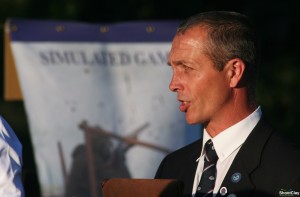 MH : Next on the agenda for me is the Portuguese Grand Prix, closely followed by the European FITASC Championships again in Portugal where I have not only qualified to represent Great Britain but have also been made captain of Team GB again. Then in July and it’s the British Grand Prix at Hicknaham Farm, an event that I won last year so I’m looking forward to trying to defend my title. After that we will have to see, winning the Classic has given me good opportunity financially to go to Chicago to compete at the World FITASC Championships in August.
MH : Next on the agenda for me is the Portuguese Grand Prix, closely followed by the European FITASC Championships again in Portugal where I have not only qualified to represent Great Britain but have also been made captain of Team GB again. Then in July and it’s the British Grand Prix at Hicknaham Farm, an event that I won last year so I’m looking forward to trying to defend my title. After that we will have to see, winning the Classic has given me good opportunity financially to go to Chicago to compete at the World FITASC Championships in August.
SC : A couple of lighter questions – we’ve noticed a lot of top shooters seem to have superstitions. Do you have anything we should look out for?
MH : Yes, I do have a couple, but I’m not going to talk about them!
SC : Finally – if you could choose your dream shooting squad, dead or alive – who would you shoot with?
MH : To be honest as I didn’t really get into clay shooting until the mid-nineties, I’ve been very lucky to be able to shoot with some of the best shooters of that era, most of whom are still competing very effectively today. I may have my figures slightly wrong but look at Paddy Howe, 5 decades at the top; John Bidwell, 4 decades; Micky Rouse, 3; and of course the much loved but never forgotten great AJ “Smoker” Smith. George Digweed MBE is of course an all-time great and is still very much at the top so he would have to be there
Matt, thanks for taking the time to speak to ShootClay – the whole team wishes you luck in the rest of 2012 and beyond!


